
American Apparel collaboed with NADA on baby onesies! What are the circles supposed to signify in NADA’s logo? Bubble wrap? Swiss cheese? After dozens of variations, we still can’t tell. (Whitney)

Joanna Malinowska showed a similar bear sculpture earlier this fall at CANADA. We argued whether that bear was a “worker bear,” “Yogi Bear,” or “Smokey Bear.” This one’s definitely none of the above. We got a “Sword in the Stone” feeling from this one, where it seems like the bear is coming out of an earthy base. And she’s kind of sassy, too, with arms crossed and long claws. For Malinowska, all bears are fair game. (Corinna)

When all your work’s sold, and you haven’t had time to replace what’s on the walls, just hand some work to a collector. Many dealers told us their booths had sold out by the end of the VIP preview, and we heard plenty of advisors on the phone trying to figure out a back-up plan now that X or Y had sold. This view comes from Zach Feuer’s booth, with (from left to right) Zach Harris and Mark Flood and an unknown painting dangled by a prospective buyer. (Corinna)
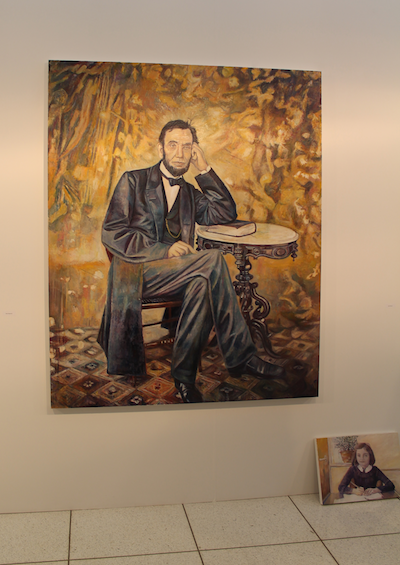
Derek Eller’s booth looked pretty great this year; most notably, Keith Mayerson’s portrait of Abraham Lincoln. (Corinna) This isn’t my favorite Keith Mayerson, but it’s still my favorite work at the fair. Mayerson’s a master of intricately detailed brushwork which glimmer in pond-like surfaces. Everything is always treated with equal devotion, even the spectrum of color in the floor tiles– a focus and time commitment that’s absent from so much of art these days. He’s just an outstanding painter. (Whitney)
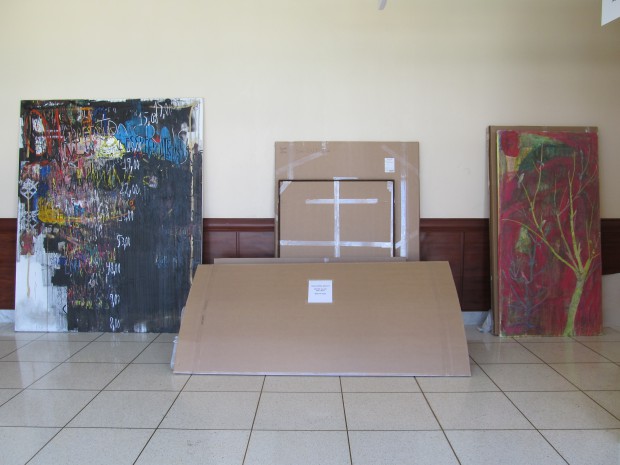
The gallery came fully prepared with large-scale works to switch out over the week; this shot comes from right outside their booth. (Corinna)

Borna Samak’s abstract digital doodly-squiggle videos had sold out, too, in the low $10,000 range. They’re a clutter of colors and shapes with nothing much to say, with a goofy, material emphasis on the extension cords (that I’m more okay with). The takeaway here is that it doesn’t matter what type of work you’re making, at NADA collectors were okay with buying it. (Corinna)
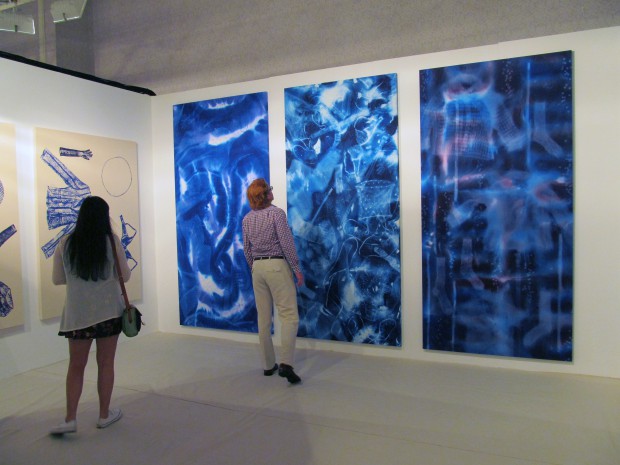
Anya Kielar has been showing with Rachel Uffner for some time, making graphic paintings and sculptures of historical women. Kinda like a contemporary Nancy Spero. These new photogram-like paintings were *not* what I’d expected to see from Kielar. I don’t know if I love them, but my eyes could get lost in those mysterious shapes floating around in that deep blue. (Corinna)
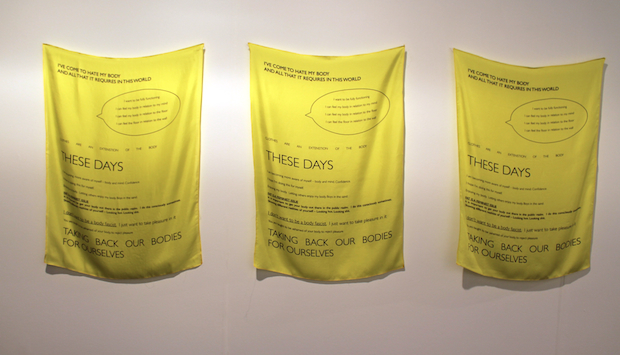
It’s easy to miss Laura Aldridge’s scarves, nondescript and tucked around the corner from Glasgow’s Kendall Koppe. But they’re well worth some time. They’re a feminist manifesto to fat, on yellow silk scarves which ripple like a whisper in the breeze. There’s a lot of shrewd use of materials at the fair, but none connected so emotionally as this. (Whitney)

It costs at least $10,000 to get a booth at NADA, so kudos to the dealers who had the balls to redirect people elsewhere. David Lewis took the leap… (Whitney)

… as did the Still House Group of Brooklyn. This copy machine came with the instructions “Push” and “Take”; the result was a photocopy of a group show press release. Pray God this works. (Whitney)

Freedman Fitzpatrick was one of a few galleries to describe the artist’s paintings as a “backdrop”, or accessory to the whole experience. (The paintings were still for sale). Here, Matthew Lutz-Kinoy had stipulated that dealers swap out the paintings throughout the day, in a performance called “Switching Paintings.” (Whitney)
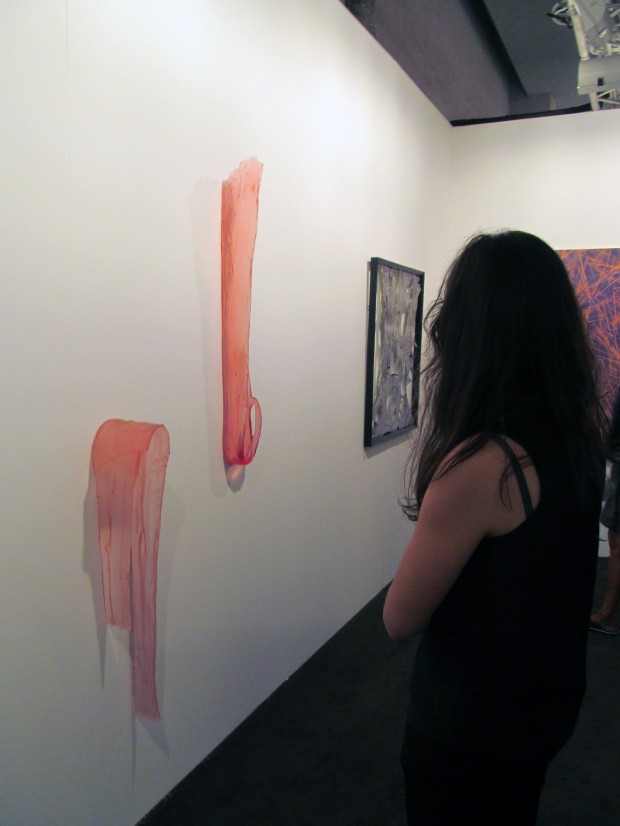
Like most of the work I saw at NADA this year, there’s a lot of messy-yet-sleek abstraction that’s got a “weird” factor. Like this semi-translucent pink sculpture that looks like a well-crafted plexiglas swirl at the same time as a pre-teenager’s retainer. Problem is, I don’t know if there’s much more to the work than that initial feeling that something’s off. (Corinna)

With permission from a handful of museums, Devon Dikeou installed a series of replicas of donation boxes. They’re installed throughout the fair, and all profits and donations will go back to the museums. The more I think about it, the more this piece grows on me. It’s a reminder of the whole other art world economy, the one that’s totally dependent on community good will and art world scraps. (Whitney)


{ 6 comments }
If you had done any research, you’d find out that David Lewis was ill and couldn’t make it to Miami, so he had an artist paint that text in the booth.
What’s with the snide commentary here? It’s not like David Lewis’s only option due to his illness was to have the artist paint the walls.
The whole tone of this post is snide.
You picked on a comment that lauded a dealer for doing something gutsy by a writer who wrote almost exclusively positive things about the fair. Your comment is inaccurate by any objective standard.
Not enough. I think we should revise the post to note that David Lewis is not gutsy, but just sick, so that people reading from home can know that David Lewis was sick. Also, think of posterity—do we so casually mislead the naive young art historian of 2050, delving through the blog archives in search of information about the great dealer pox of 2013?
You people make me wish so bad that I could’ve afforded to go to this thing. Thanks a lot AFC, you suck.
Comments on this entry are closed.